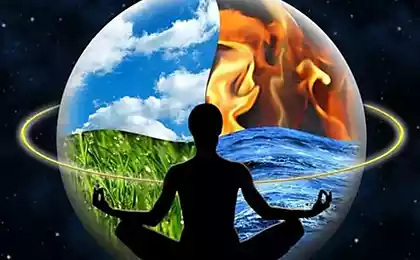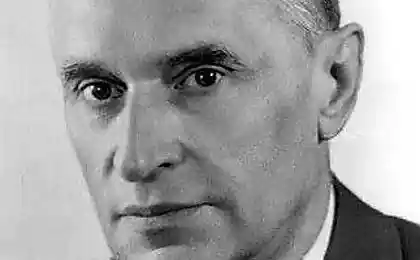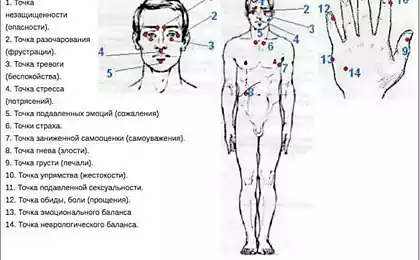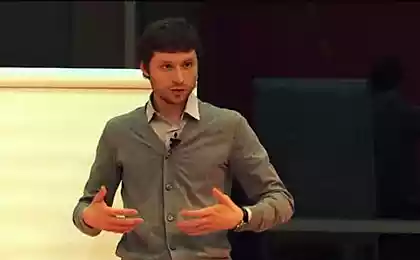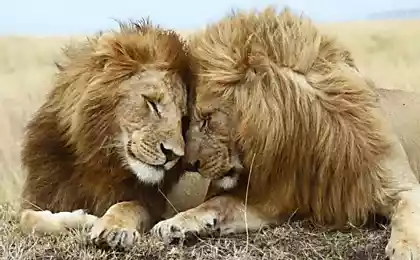396
The basis of health — balance of primary elements
The basis of the doctrine of the elements is one of the main categories of Chinese philosophy of Wu xing, which was first described in the Book of documents, the oldest written monument of the Chinese culture. Himself Confucius 500 years before our era, collected and systematized the documents of ancient Chinese sages. But this is the first written source, mentioning the elements, the knowledge of the five-membered structure of the universe is much older, its history goes back thousands of years. These five elements, which are described in the Book of documents: Water, Fire, Wood, Metal, Earth.

In Hinduism there is also the doctrine of elements (tattva), according to Hindu tradition, the universe consists of five basic forms – Air, Earth, Fire, Water and Spirit.
It is interesting that the ancient Greek philosophers talked about the five elements, and they are in the heart of the universe was supposed to Air, Fire, Water and Earth. Fifth element the ancient Greeks called Ether is the subtlest matter, which is all-pervading.
The same description of the world in the extant documents of ancient Greeks, Chinese and Indians suggests that before us the ancient knowledge of mankind about the basics of the universe, which has the deepest sense of the sacred. It's not just the fabrications of individual philosophers, which had been in use before the advent of modern science, and the revelation of the very essence of the universe, the former is available to mankind at the dawn of civilization.
Tibetan medicine, by adopting the doctrine of elements, interprets it as follows. The whole world, as a receptacle of all that exists, consists of five elements:
Space. That's what holds everything and enables everything to be carried out. The wind. This movement, activity and development, which leads to the next element – Fire. Fire. It is the energy of motion, development and transformation. Water. It serves to connect, the connection elements. Earth. The element that gives stability and form to all things. The diversity of the world consists of an infinite combination and interaction of these five elements. Man also consists of them, but for a man identified specific compliance elements and physiological characteristics:
Space: a mental and intellectual activity. Wind: movement of body, breath, nerve impulses. Fire: body temperature, digestion. Water: the fluid of the body – blood, lymph, etc: bones, muscles, tendons. In line with the elements placed as the organ of the human body:
The space: the heart, small intestine, tongue, head.
Air: lungs, large intestine, nose, right leg.
Fire: liver, gall bladder, eye, right hand.
Water: kidneys, bladder, and reproductive organs, ears, left leg.
Earth: spleen/pancreas, stomach, lips, left hand.
Thus, all people, everything that happens to a person is determined by the ratio of the five elements. Through the exchange of these elements with the outside world, changes in the human body, this exchange takes place when eating and breathing, that's why in Tibetan medicine this is important how a person eats and breathes. Each element in the diet, affects the other elements and falls under their influence, therefore, in the treatment of diseases in Tibetan medicine, special attention is paid to diet. The aim of all therapeutic procedures is to bring to harmony the disturbed balance of the elements in the human body.
Author: Yulia Ustinova
P. S. And remember, only by changing their consumption — together we change the world! ©
Source: www.ustinova.info

In Hinduism there is also the doctrine of elements (tattva), according to Hindu tradition, the universe consists of five basic forms – Air, Earth, Fire, Water and Spirit.
It is interesting that the ancient Greek philosophers talked about the five elements, and they are in the heart of the universe was supposed to Air, Fire, Water and Earth. Fifth element the ancient Greeks called Ether is the subtlest matter, which is all-pervading.
The same description of the world in the extant documents of ancient Greeks, Chinese and Indians suggests that before us the ancient knowledge of mankind about the basics of the universe, which has the deepest sense of the sacred. It's not just the fabrications of individual philosophers, which had been in use before the advent of modern science, and the revelation of the very essence of the universe, the former is available to mankind at the dawn of civilization.
Tibetan medicine, by adopting the doctrine of elements, interprets it as follows. The whole world, as a receptacle of all that exists, consists of five elements:
Space. That's what holds everything and enables everything to be carried out. The wind. This movement, activity and development, which leads to the next element – Fire. Fire. It is the energy of motion, development and transformation. Water. It serves to connect, the connection elements. Earth. The element that gives stability and form to all things. The diversity of the world consists of an infinite combination and interaction of these five elements. Man also consists of them, but for a man identified specific compliance elements and physiological characteristics:
Space: a mental and intellectual activity. Wind: movement of body, breath, nerve impulses. Fire: body temperature, digestion. Water: the fluid of the body – blood, lymph, etc: bones, muscles, tendons. In line with the elements placed as the organ of the human body:
The space: the heart, small intestine, tongue, head.
Air: lungs, large intestine, nose, right leg.
Fire: liver, gall bladder, eye, right hand.
Water: kidneys, bladder, and reproductive organs, ears, left leg.
Earth: spleen/pancreas, stomach, lips, left hand.
Thus, all people, everything that happens to a person is determined by the ratio of the five elements. Through the exchange of these elements with the outside world, changes in the human body, this exchange takes place when eating and breathing, that's why in Tibetan medicine this is important how a person eats and breathes. Each element in the diet, affects the other elements and falls under their influence, therefore, in the treatment of diseases in Tibetan medicine, special attention is paid to diet. The aim of all therapeutic procedures is to bring to harmony the disturbed balance of the elements in the human body.
Author: Yulia Ustinova
P. S. And remember, only by changing their consumption — together we change the world! ©
Source: www.ustinova.info
The Dutch are going to build a home windmill
Professor S. Savel'ev: People oscillate between purely monkey and human





